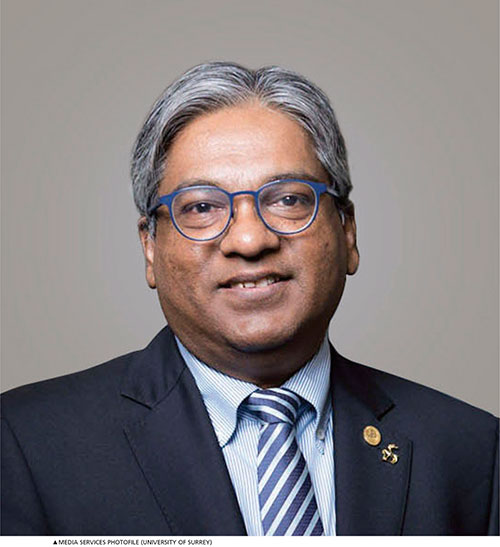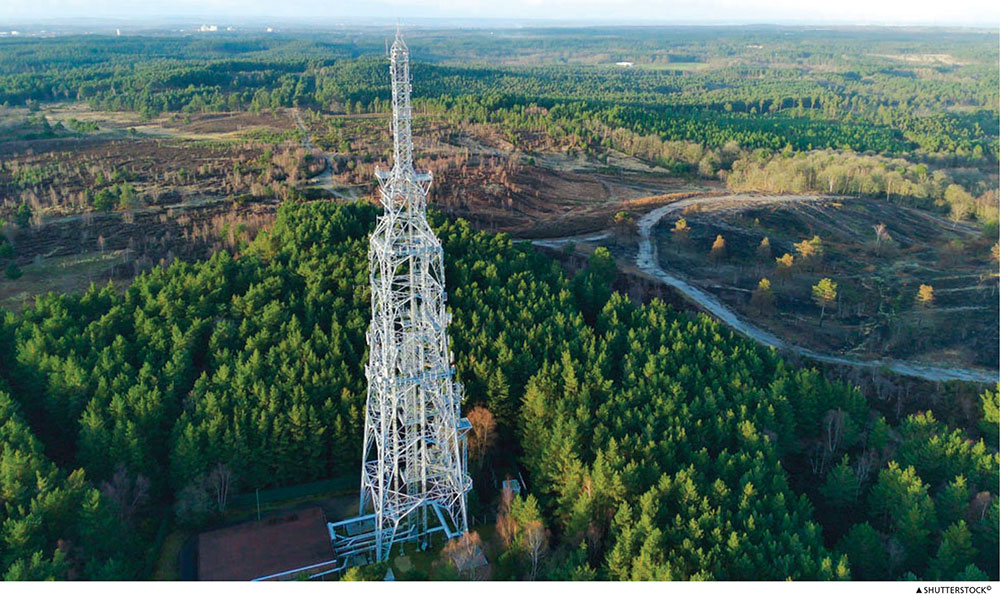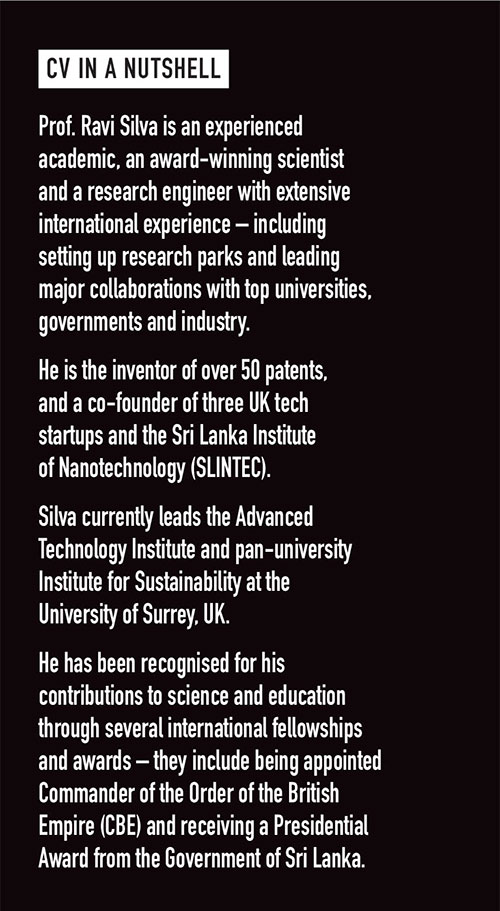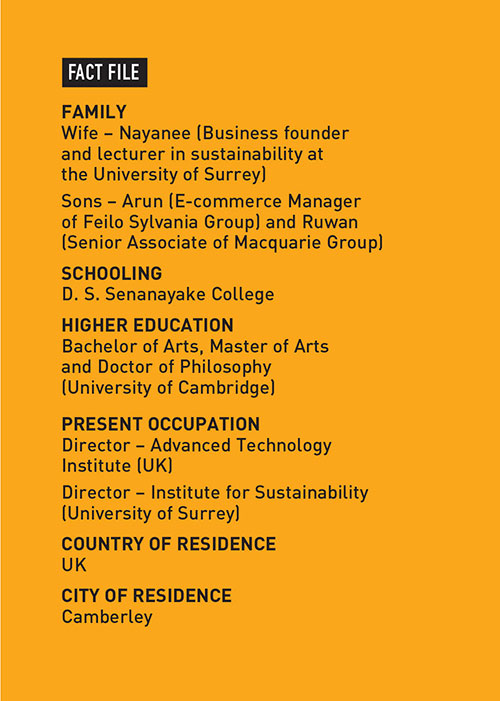Prof. Ravi Silva
Engineer a greener future

Q: What inspired your journey into nanotechnology and large area electronics?
A: I began my PhD in the early 1990s, when carbon nanotechnology was being defined in laboratories such as Cambridge. I was inspired by the pioneers in the field – Nobel laureate Prof. Harry Kroto – who later became a mentor after discovering buckyballs – and Prof. Sumio Iijima (who discovered the carbon nanotube).
It was a natural progression to be at the vanguard of nanotechnology, and use it to produce large area and printable electronics.
Q: How did your time at Cambridge and Sri Lankan educational background shape your approach to scientific research?
A: My education at D. S. Senanayake College gave me a strong grounding while Cambridge University provided an unparalleled environment of knowledge and innovation.
Working daily with fellow Sri Lankan scientists – many of whom are now leading academics around the world – spurred us all on to achieve more and pursue our respective fields with passion.
Q: With over 50 patents to your name, which one stands out as the most impactful or challenging?
A: Patents are essentially recipes that protect an invention for about 20 years, giving first mover advantage to establish a completely new product or technology. Some of my patents have been assigned to major multinationals while others have helped establish spin out companies.
One patent helped produce Vantablack™, the blackest material on Earth. Others are in the process of creating new technologies including bendable high sensitivity X-ray detectors with Silveray, and self-powered sensors for dementia and sleep apnoea patients through home care solutions with Z-Pulse.
Q: From leading Surrey’s net zero carbon efforts to setting up a solar farm, what have been the main challenges and lessons in institutional sustainability leadership?
A: The biggest challenge has been the time required to move from system design to implementation in large scale programmes.
If one wants to change the ecosystem and scale programmes, these initiatives must first be produced by large multidisciplinary teams, and then implemented by talented groups who understand the business and prevailing socioeconomics.
For example, setting up a 12 megawatt solar farm in an area designated as one of outstanding natural beauty needs extensive lead time for regional planning. Similarly, building large infrastructure always demands supporting finance to justify the ROI.
Q: How do you see your work influencing global net zero goals, particularly in emerging economies such as Sri Lanka?
A: It’s imperative that island nations set an example in building green energy supply systems, leveraging their advantageous geological formations and geographical location.
A few decades ago, Sri Lanka’s electricity and energy infrastructure was over 80 percent renewable. Unfortunately, under-investment and political interventions led to a shift towards fossil fuel based energy production, which seemed cheaper at the time.
This is not the case anymore. The country needs to revert to a solar, wind and hydroelectric energy economy, which will provide both green energy and energy security. Having local energy smart grids controlled by AI agents could enable Sri Lanka to lead and influence global net zero initiatives.

Q: Having worked extensively in both the UK and Sri Lanka, how do you view the role of diaspora scientists in advancing national innovation agendas?
A: Across the world, highly innovative and successful Sri Lankan scientists – many of whom received a strong foundation in the national educational system of their motherland – now work in some of the most sought after organisations.
We need to establish suitable conduits and networks to create an environment that reaps the benefits of their experience. The best example of brain gain is China, where citizens educated in top universities have returned to help their motherland.
Q: What role do you see AI and machine learning playing in the development of next generation electronic materials or devices?
A: AI and machine learning can accelerate the development of next generation electronics and devices.
They also allow for new materials to be modelled, invented and developed – with materials discovery at the heart of the process. All future technologies, manufacturing processes and services will need new materials, so it is imperative that nations invent and apply fresh knowledge.
Sri Lanka must invest in these new developments and tools to remain competitive. With timelines for innovations accelerating, we need to introduce agile, sustainable and forward thinking curricula at the earliest possible stage to benefit future generations.


